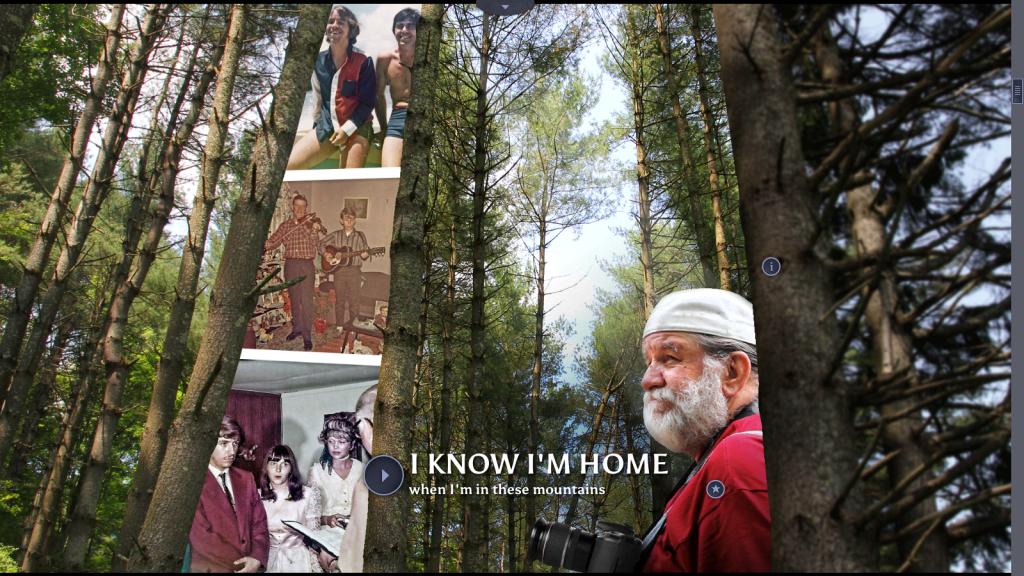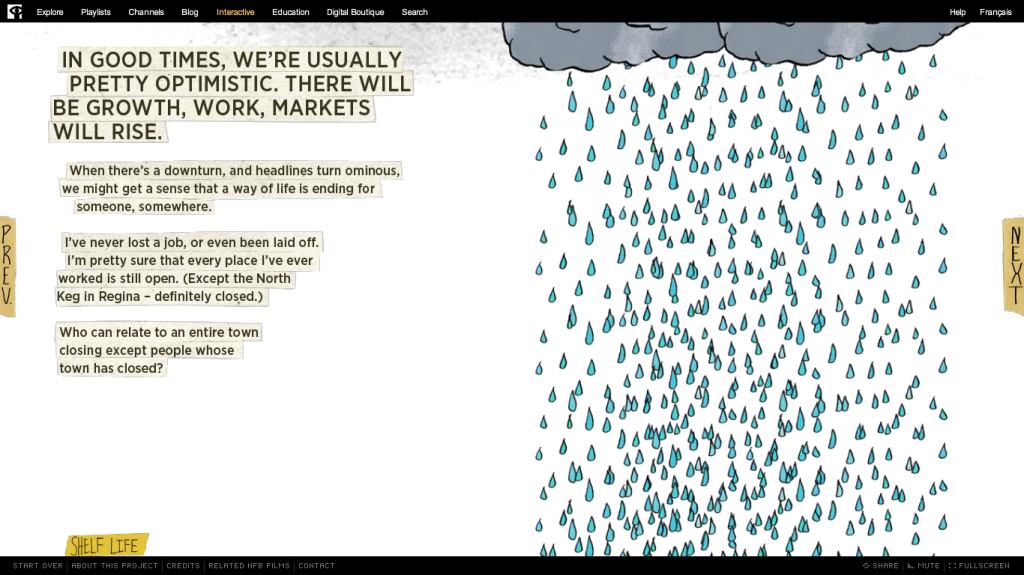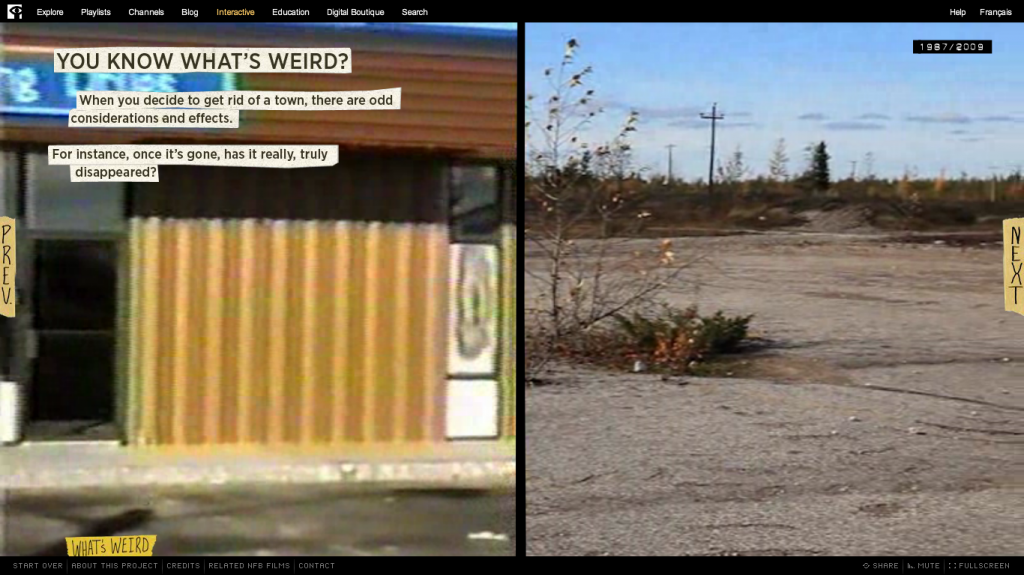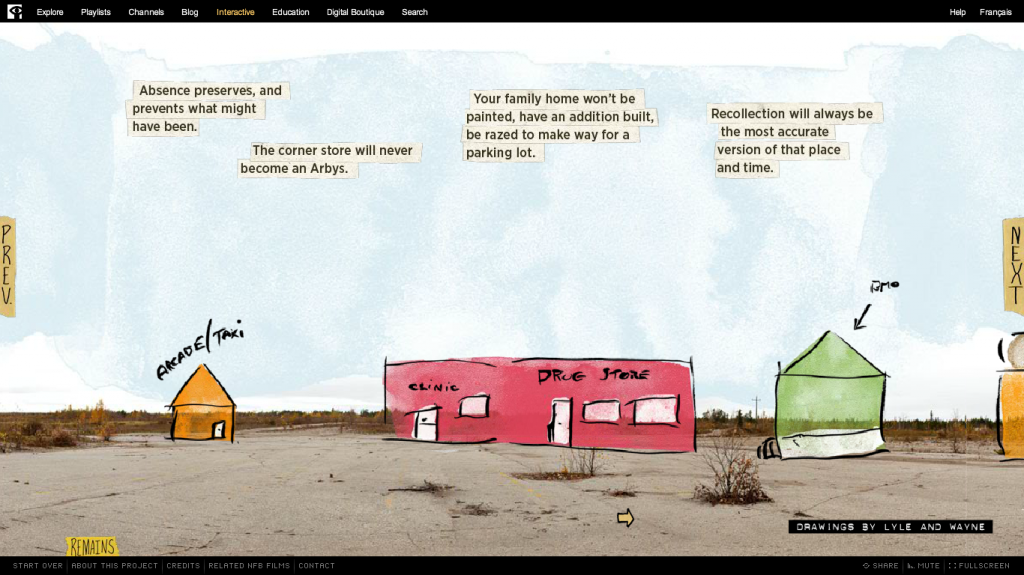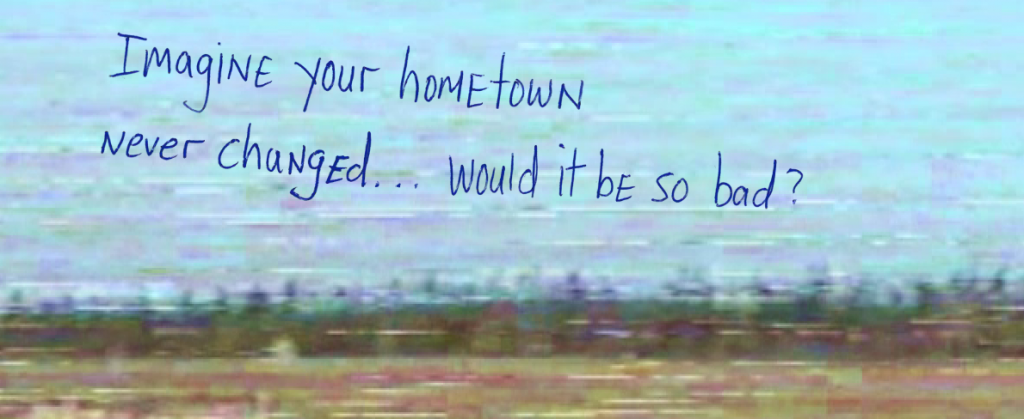Yesterday, I posted part 2a of my analysis of Welcome to Pine Point. In it I focused on the introduction and chapter one (Town). In this post, I’ll continue making my way through the interactive documentary. Up first, chapter two: PinePointers
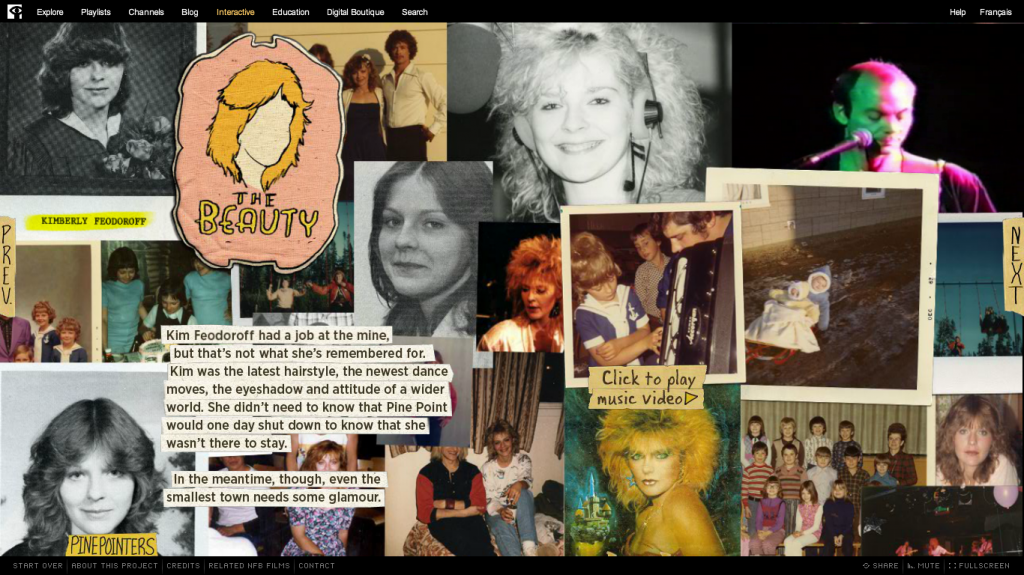
This chapter is dedicated to four people from Pine Point (why only 4? why these 4?). It’s divided into two main sections: Then, with 4 pages, one dedicated to each of the people/characters and what they did/looked like in high school, and Now, with 4 pages, one dedicated to each of the people/characters and what they do/look like now.
I like both the concept of having a separate chapter dedicated to people and the visual style that’s used in each of the pages. While the style doesn’t seem fitting for my project, I am interested in thinking through how I could do something similar. It’s helpful (and visually powerful) to have all of the pictures together instead of in a slide show that you need to click through. One thought: Instead of individuals, I could have generations?
chapter three: Ends and Odds
This chapter includes memorabilia (photos, a video, “Pine Point Memories,” artifacts/objects) and the narrator’s brief reflections on memory objects.
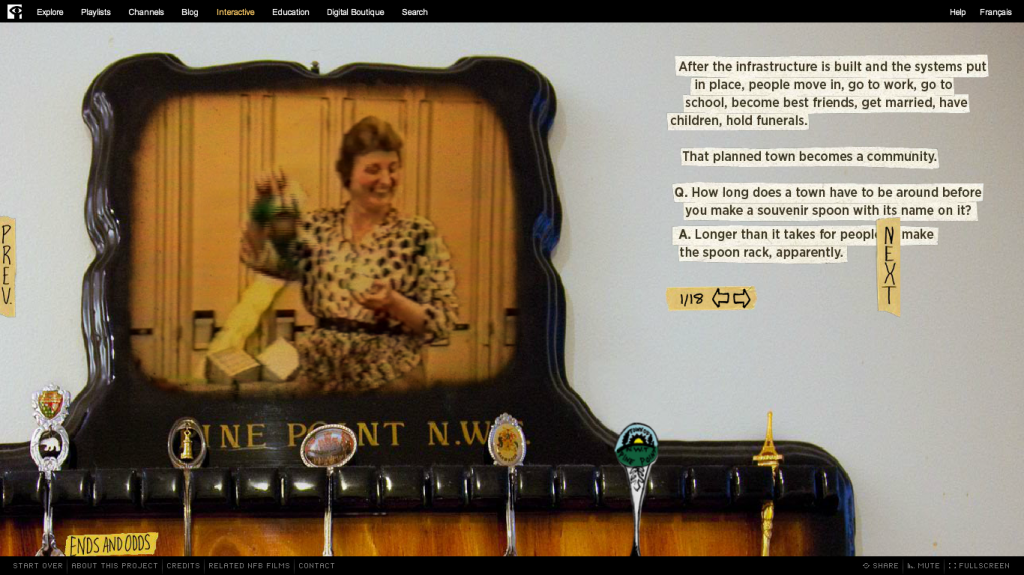
In their interviews and about this project page, the Googles discuss the origins of this project: they had been planning to do a book about “the death of the photo album as a way to house memory.” After visiting the Pine Point Revisited website, they decided to focus on creating a interactive documentary about Pine Point instead.
I like the subtle ways in which their interests in photo albums and ideas about memory and memory objects are woven into the Pine Point narrative in this chapter. My farm project is heavily influenced by my research and scholarly interest in identity, home, memory and belonging. I’d like to find ways to bring those theories in without it being overbearing or too jargon-y (or text heavy). This project provides a good model for how to make room for larger (deeper?) reflections that aren’t too “academic” or heavy-handed.
I also like their page about Richard’s hats. The page has a full screen video of Richard trying on each of the dozen hats that he had and wore when he lived in Pine Point. A brief explanation of the hats is offered in text which is layered over the video:
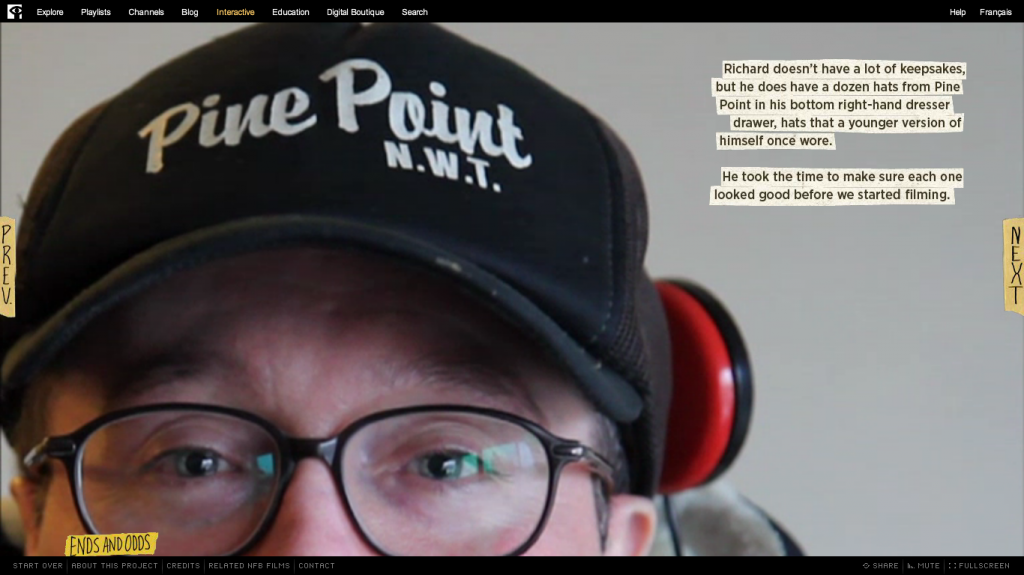
chapter four: Cosmos 954
This chapter offers the juxtaposition of the narrator’s (Michael Simon’s) hazy memories of living in Yellowknife, Canada when a Russian satellite (Cosmos 954) came crashing down with the seemingly sharper memories of Pine Pointers in fights, guest lists at their many parties, or the burning down of Pine Point’s high school.
Do I like this section? I can’t decide. I’m intrigued by the narrator’s story in this documentary. It’s wistful, nostalgic and reverent. He seems to long for the clear memories and accounts of happy experiences that the Pine Point Revisited site depicts. While this perspective makes for a compelling story, what stories and perspectives does it leave out or ignore?
design note: On one of the pages in this section, the text is layered over a full-screen slide show that mixes still photos with documents (poems, newspaper accounts) of the high school fire. I like the effect. How difficult is it to do with this treatment? Will it load too slowly on most computers?
chapter five: Here to Work
Wow, I like this section! It provides more reflections on memory and the work of shaping experiences into stories or legends. It really has me thinking about my struggles with memory, nostalgia, storytelling and our inclinations to memorialize things in ways that aren’t truthful. I especially like their comments on this page:
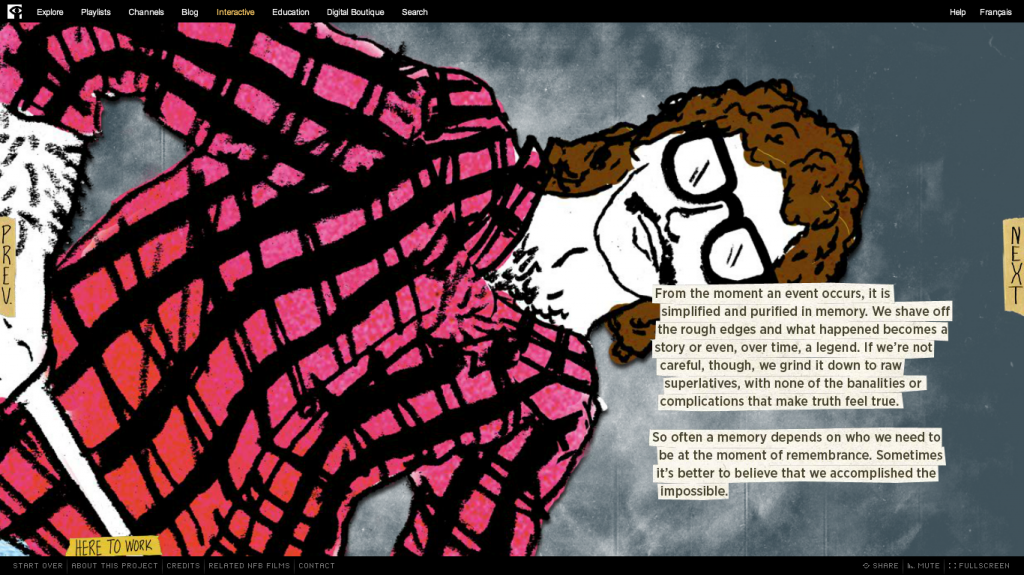
Grinding down the memories into raw superlatives…a memory depends on who we need to be at the moment of remembrance….These ideas resonate with me. The farm project is definitely shaped by my experiences in 2001-2001, when I started it, and 2002-2013, when I’m (hopefully) finishing it. I’d like to incorporate some discussion of my experiences into the project.
